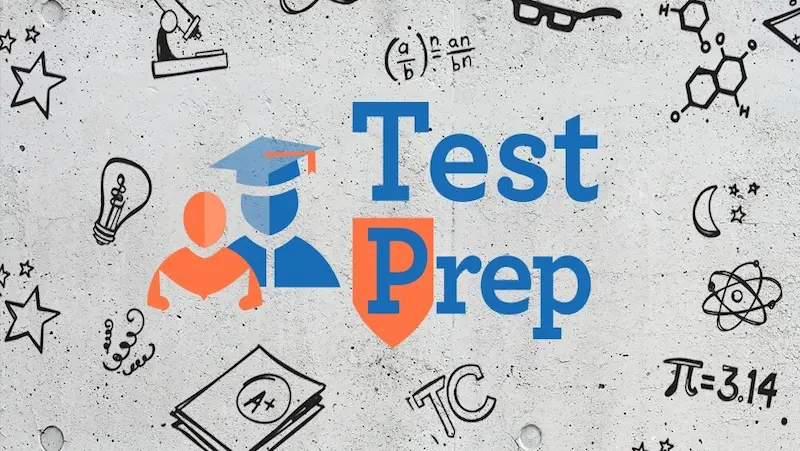In the pursuit of academic and professional success, the importance of test preparation cannot be overstated. Whether you’re a student aiming to excel in exams or a professional looking to advance your career, proper preparation lays the foundation for achievement. This essential step not only boosts your confidence but also enhances your understanding of the subject matter, ultimately leading to better performance and broader opportunities. In this fast-paced world, where knowledge is power, investing in effective test prep is a crucial choice that can shape your future.
Table of contents
- Understanding the SSAT Test
- Test Prep Strategies for SSAT
- SSAT Test Preparation for Upper-Level
- Online Test Preparation for SSAT
- Practice Exam Questions
- Conclusion
- Frequently Asked Questions
Understanding the SSAT Test
When it comes to gaining admission to prestigious private schools, the Secondary School Admission Test, or SSAT, is a critical component. This standardized test assesses a student’s abilities in core subjects and plays a crucial role in the admissions process.

What is the SSAT Test?
The SSAT, or Secondary School Admission Test, is a standardized test designed to assess the academic abilities of students seeking admission to private or independent schools. These schools often use SSAT scores as one of the key factors in their admissions decisions. The test measures a student’s knowledge and skills in three main areas:
1. Verbal: This section evaluates a student’s vocabulary, verbal reasoning, and reading comprehension skills. It assesses your ability to understand and interpret written passages, as well as your vocabulary knowledge.
2. Math: The math section tests your mathematical skills, problem-solving abilities, and understanding of mathematical concepts. It covers topics typically taught in math classes at your grade level.
3. Reading: This section assesses your reading comprehension skills. It presents passages and asks questions to gauge your ability to understand and analyze written material.

Types of SSAT Tests (Lower Level, Upper Level)
The SSAT is not a one-size-fits-all test. It comes in different levels to accommodate students of various ages and grade levels:
1. Lower Level SSAT: This version is intended for students in grades 5-7 who are applying for admission to middle schools. It focuses on age-appropriate content and is designed to evaluate skills appropriate for this stage of childrens education.
2. Middle-Level SSAT: Geared towards students in grades 8-11, this level is for those seeking admission to private high schools. It covers more advanced content to match the expectations of high school curricula.
3. Upper-Level SSAT: The Upper-Level SSAT is for students in grades 9-12 who are applying for admission to private high schools. It includes challenging content that aligns with the rigor of high school coursework.
Test Prep Strategies for SSAT
Preparing for the Secondary School Admission Test (SSAT) can be a daunting task, but with the right strategies, you can increase your chances of success. Whether you’re aiming for a top-tier boarding school or a prestigious private institution, these test prep strategies will help you excel on the SSAT.

Study Schedule Creation
Creating a well-structured study schedule is the first step towards SSAT success. Start by setting aside dedicated study Homeschooling time management each day or week. Break your preparation into manageable chunks, covering all test sections: Verbal, Math, and Reading. Consistency is key, so stick to your schedule and adjust as needed.
Study Resources
Choosing the right study materials is crucial. Utilize reputable SSAT prep books, online courses, and educational websites for kids. Consider hiring a tutor if you need personalized guidance. Your school’s guidance counselor can also provide valuable resources and advice.
Practice Tests
Practice makes perfect, and this holds true for the SSAT. Take full-length practice tests to simulate real test conditions. This helps you become familiar with the format, pacing, and types of questions you’ll encounter. Analyze your performance to identify areas where you need improvement.
Focus on Weak Areas
Identify your weak areas and focus on improving them. If math is a challenge, spend extra time practicing math concepts. Struggling with vocabulary? Create flashcards and expand your word bank. Tailor your study plan to address your specific weaknesses.
Test-Taking Strategies
On test day, it’s not just what you know but how you approach the test that matters. Develop effective test-taking strategies:
1. Pacing: Manage your time wisely. Don’t get stuck on one question; if you’re unsure, mark it and come back later.
2. Process of Elimination: Use the process of elimination to eliminate incorrect answer choices, increasing your odds of selecting the right one.
3. Guessing: There’s no penalty for guessing on the SSAT, so if you’re unsure, make an educated guess.
4. Stay Calm: Stay composed, even if you encounter challenging questions. Anxiety can hinder your performance, so take deep breaths and stay focused.
SSAT Test Preparation for Upper-Level

Understanding Upper-Level SSAT
The Upper-Level SSAT is designed for students in grades 8 through 11 who are aiming to gain admission to competitive independent schools. It’s a standardized test that evaluates a student’s verbal, math, and reading skills, along with an essay section that assesses their writing abilities. This test plays a significant role in the admissions process, as it provides schools with valuable insights into a student’s academic capabilities.
Content and Skill Differences
1. Verbal Section: The Upper-Level SSAT includes more advanced vocabulary and reading comprehension passages. Expect questions that require a deeper understanding of word meanings, context, and tone. Building a strong vocabulary and honing reading skills is essential for success in this section.

2. Math Section: Compared to lower-level SSATs, the Upper-Level test covers more complex math concepts, including algebra, geometry, and advanced arithmetic. Habits for students who need a solid foundation in these areas and should be prepared for challenging problem-solving questions.
3. Reading Section: The Upper-Level SSAT incorporates longer and more complex reading passages, demanding higher-level critical thinking and inference skills. Practice reading a variety of texts and analyzing them critically to excel in this section.
4. Essay Section: The essay prompt in the Upper-Level SSAT assesses a student’s ability to express their ideas coherently and persuasively. Developing strong writing skills and practicing essay writing under time constraints is essential.
Online Test Preparation for SSAT

Advantages of Online Prep
1. Flexibility and Convenience: One of the standout advantages of online SSAT test preparation is the flexibility it offers. Students can access study materials and resources at their convenience, making it easier to fit into their busy schedules. Whether you’re a night owl or an early bird, you can choose the best time for your study sessions.
2. Personalized Learning: Online platforms cater to individual needs. They offer adaptive kids learning apps modules that adjust to your strengths and weaknesses. This ensures that you spend more time on areas where you need improvement, optimizing your study time.
3. Access to a Wealth of Resources: The internet is a treasure trove of study materials. Online SSAT prep courses provide a wide array of resources such as practice tests, study guides, and interactive tools that are constantly updated to align with the latest exam patterns.
Interactive Learning Platforms
Virtual Classes
Online schooling SSAT prep courses often include virtual classes that simulate the classroom experience. These live or pre-recorded sessions are conducted by experienced instructors who can provide valuable insights, answer questions, and guide you through difficult concepts. The best part? You can attend these classes from the comfort of your home, eliminating the need for commuting.
Practice Quizzes and Exercises
Online platforms offer an extensive range of practice quizzes and exercises. These are indispensable tools for self-assessment and skill-building. You can gauge your progress, identify areas where you need improvement, and tailor your study plan accordingly. The instant feedback provided by these exercises is a game-changer, allowing you to fine-tune your skills as you go.
Practice Exam Questions

Lower Level SSAT Practice Questions
If you’re in grades 5-7 and preparing for the Lower Level SSAT, our practice questions are tailored to your needs. These questions cover topics in quantitative math, verbal reasoning, and reading comprehension. By practicing with these questions, you’ll become more familiar with the format of the Lower Level SSAT and develop essential test-taking skills.
Middle-Level SSAT Practice Questions
Students in grades 8-10 taking the Middle-Level SSAT can benefit from our Middle-Level practice questions. These questions are designed to challenge you in areas such as mathematics, verbal reasoning, and reading comprehension, while also helping you get a feel for the test’s structure. Consistent practice with these questions can boost your confidence and improve your performance on test day.
Upper-Level SSAT Practice Questions
For high school students aiming to conquer the Upper-Level SSAT, our Upper-Level practice questions are your go-to resource. These questions encompass the same subjects as the lower levels but are adjusted to match the higher difficulty level of the Upper-Level SSAT. By working through these practice questions, you’ll hone your skills and gain a competitive edge on test day.
Answers and Explanations
We understand that simply practicing questions isn’t always enough. That’s why we provide detailed answers and explanations for each practice question. These explanations help you understand not only why an answer is correct but also why other options are incorrect. This deepens your comprehension and enables you to apply your newfound knowledge to similar questions during the actual SSAT.
Conclusion
In conclusion, mastering test preparation for the SSAT and upper levels requires dedication, effective student habits strategies, and a clear focus on your goals. By utilizing the techniques and tips outlined in this guide, you can improve your chances of success and achieve your academic aspirations. Remember, consistent practice and a positive habits mindset are key to achieving your best results on these important exams. Good luck on your journey to academic success!
To get your hands on more such articles, educational content, and free resources on coding for kids, robotics courses, game development, etc., check out the BrightCHAMPS Blog Page now!
Frequently Asked Questions
Q1. How can I effectively manage my time during the SSAT test?
A1. To manage time effectively during the SSAT, practice time-bound practice tests, allocate a set time per question, and skip difficult ones to return later if needed.
Q2. Are there any specific resources recommended for upper-level SSAT preparation?
A2. Yes, for upper-level SSAT prep, consider using official SSAT prep materials, review books, online courses, and private tutors for personalized guidance.
Q3. Can I improve my vocabulary for the verbal reasoning section?
A3. Absolutely! Enhance your vocabulary by reading challenging texts, using vocabulary-building apps, and making flashcards of unfamiliar words.
Q4. How important is reviewing my practice test performance?
A4. It’s crucial! Reviewing your practice tests helps identify weak areas, adapt your study plan, and refine test-taking strategies.
Q5. Is online SSAT preparation suitable for all types of learners?
A5. Online SSAT prep can benefit many learners but may not suit everyone. Choose a method that aligns with your learning style and needs.
Q6. Can I take the SSAT test multiple times?
A6. Yes, you can take the SSAT multiple times, but there are limits on how often. Check the SSAT website for specific policies on retaking the test.


 We are an army of educators and passionate learners from BrightChamps family, committed to providing free learning resources to kids, parents & students.
We are an army of educators and passionate learners from BrightChamps family, committed to providing free learning resources to kids, parents & students.








